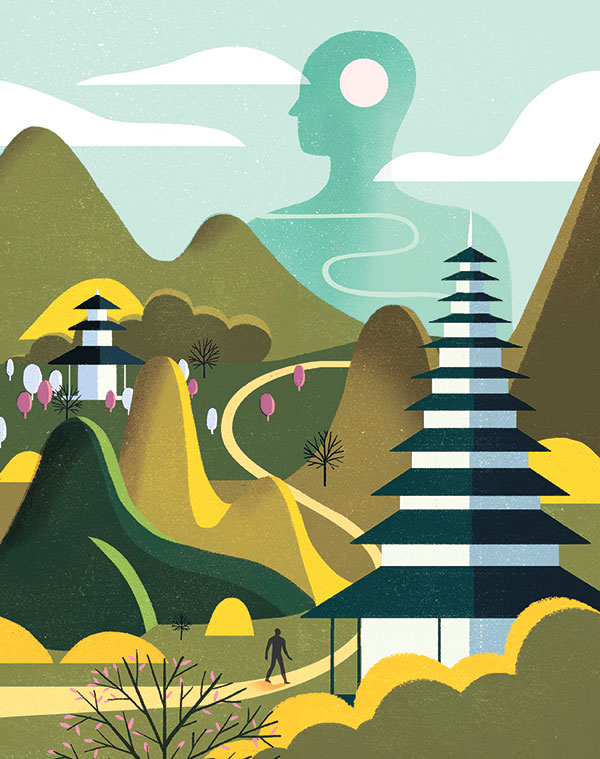The Roads of Bali
By Denver Ejem Torres
“OUR roads in Bali are small,” Ketut, our driver, tells us; his lips betray his disappointment. Behind his statement, and as evident in his gesticulations, is a wish for wide roads. Then he asks us if our roads back home are as “small.”

My travel companion and I stare at each other, wordlessly enquiring — How do we answer that? Despite it being a yes-no question, either of us could give an instant reply. The word “home” is apparently not as simple as we may have previously thought. I am assuming that like myself, my companion has to analyze the question to provide the most truthful answer. She is from Butuan, and I, from Cagayan de Oro. Both of us have been based in Cebu for a time now. And then there’s the question of center — as in Manila, the face of the Philippines. I did not expect that such naïve question about roads could cause uneasiness, stress. Which city? Which streets, roads do I describe? Which city is truly my home?
Ketut’s question is at once simple and complex. His question is perplexing. Suddenly I am transported to a crossroad of questions; the question is multiplying rapidly in my mind. How to answer this? Social decorum dictates that I must reply — it does not matter if it is accurate or not, truth or lie. In a moment’s panic, I say: Uhmmm, no. They are big, wide. Very wide.
But am I being truthful with that answer? Is that answer fair and politically correct? My answer bothers me. We are in Denpasar when we talk about the roads of Bali. After my answer, the topic shifts to something else — about his only son who goes to a university in Bali.
I look outside and think consciously of the roads. It is all that I think about while on the road and most especially when ascending to Uluwatu, a temple perched on a cliff facing the Indian Ocean.
Ketut is actually looking for the word “narrow.” After days of being on the road I can attest that indeed, except the major roads in Denpasar, the streets and roads of Bali are narrow.
But what unsettles me about my answer? I am sure it is not an issue of synthesis, of coming up with a conclusion or a representative description of the streets and roads I’ve come across in the Philippines. I can do that easily. I guess it is sympathy. I’ve been unable to match his disappointment, or frustration. Something in me is saying that my answer is wanting, wrong. That it is not what Ketut is looking for, not what he wanted to hear really.
How indeed can I sympathize with him? His disappointment is a mismatch from mine. In the places I’ve been to and lived in the Philippines, I travel, occasionally and mostly daily, on streets, roads, thoroughfares that are upsetting because of various reasons. They may not be narrow but they are sources of disappointments and frustrations, nevertheless.
Some roads remain rough and unpaved for decades, like that road from the municipal center of Claveria going to my maternal grandparent’s house in Sta. Cruz, a road that haunts my memory for three reasons.
(1) I, along with the rest of the passengers of a jeep, almost fell into a cliff. In the 90s, there is only one jeepney to transport the passengers and produce from Sta. Cruz and other barangays to the municipal center. The driver of that jeep is named Jesus (pronounced as Hesus). I am not sure how many Kulafu or Fighter Wine or cups of coffee he downed that morning when he swerves into the edge of the road, and one of the rear tire hangs in the cliff.
(2) One summer, I think it is 1995 — I visit my grandparents without asking my parents’ permission or informing them at least — and when I arrive in Claveria I am told that there’s no jeep that will transport me to Sta. Cruz. So I have no choice but to walk. In a grassy bend of that road, something stirs behind the tall grass that startles me. I run so fast that in a few minutes I arrive in my lola’s doorsteps, muttering “gigukod ko sa Baboy Bakya, ‘la”.
(3) Despite that road being a major road for farmers to transport their produce, the mayors and governors from political dynasties snob it year after year.
Potholes — we find them in Cebu, Cagayan de Oro and who knows where else in the Philippines. Edsa? The major thoroughfare that is synonymous with traffic, accidents, dissents. Cebu streets? They have unwalkable sidewalks because of snatchers and hold-uppers. We haven’t even talked about its terrible transportation system. All of this comes to mind when we speak of roads.
Streets, roads, are revelatory. They tell so much stories about a place, a city. And as well as the story of where a place, a city is heading.
Wide, (or big, to accommodate the linguistic imagination of Ketut) roads mean that the city is responding to a demand. Every city, no matter how grand her aspirations and dreams are, she always starts small, making do with the resources available to her.
The existence of wide roads means that there is an increase in crowds and cars. It also means that there is more pollution. Wide roads are usually tell-tale signs of a stressed city, of a city bursting at the seams, expanding, growing, metamorphosing into something you will hate but also love. But mostly hate.
During my high school days, DPWH comes to my neighborhood to build the J.R. Borja Extension. The once narrow road, lined with grass, gumamelas, bananas, bamboo trees and atabays, that led to Canete’s store in Macajalar, is now gone and has been replaced by that four-lane highway. When I think of that old road, I think of the quiet, serene days, of the good old days.
If I have the chance to go back to that very moment, I will tell Ketut the same thing. But this time I will expound my answer. I will tell him this: No, we do have wide roads, Ketut. But consider yourself lucky that you have narrow roads for sooner or later you will have wide ones and the things that come with them and you will very likely hate them, and like me, you will miss the good old days when your roads are still narrow.
***
Denver Ejem Torres loves to travel. Next on his list are Japan and Australia.


